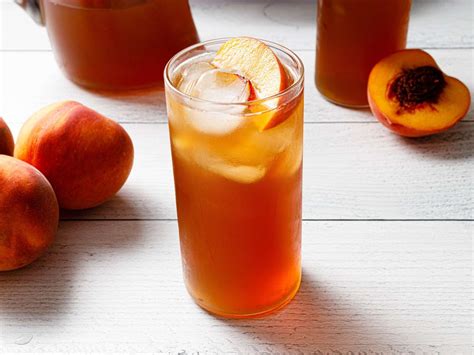Peach Tea: From Farm to Cup – Understanding the Cost
Peach tea, that refreshing summer beverage, boasts a delightful blend of sweet peach flavor and the invigorating tang of tea. But have you ever stopped to consider the journey your peach tea takes, from the farm to your cup, and the costs involved at each stage? This article delves into the multifaceted pricing structure of peach tea, exploring the factors that contribute to its final cost.
The Cost of Peaches: A Foundation of Flavor
The foundation of any good peach tea lies in the quality of the peaches themselves. The price of peaches fluctuates significantly depending on several key factors:
- Seasonality: Peaches are a seasonal fruit, meaning prices peak during their harvest season (typically summer) and are higher when supply is lower. Out-of-season peaches, often imported or frozen, will invariably cost more.
- Variety: Different peach varieties command different prices. Premium varieties known for their exceptional sweetness and texture may be significantly more expensive than more common types.
- Growing Region: The geographic location of the peach orchard influences costs. Factors such as climate, soil conditions, and labor costs in the growing region all impact the final price of the fruit.
- Organic vs. Conventional: Organic peaches, grown without synthetic pesticides and fertilizers, generally command a higher price due to the increased cost of production.
Tea Leaves: The Other Half of the Equation
While peaches are the star of the show, the tea itself plays a crucial role in the overall flavor profile. The cost of tea leaves depends on:
- Type of Tea: Black tea is commonly used in peach tea, but green tea or white tea can also be employed, each with its own price point. Higher-grade teas, known for their superior flavor and aroma, are more expensive.
- Source and Origin: Tea leaves from specific regions, known for their unique characteristics, often command premium prices. The cost of importing tea from distant locations also affects the overall expense.
- Processing Methods: The methods used to process tea leaves influence their quality and, consequently, their price. Artisanally processed teas often carry a higher price tag.
Manufacturing and Processing: From Fruit to Beverage
Once the peaches and tea leaves are sourced, the manufacturing process adds further costs:
- Processing Peaches: Peaches may be processed in various ways, such as juicing, pureeing, or using peach flavorings. The method employed significantly affects the cost, with fresh, whole peaches being the most expensive option.
- Blending and Packaging: The process of blending the tea and peach ingredients, followed by packaging into bottles, cans, or other containers, adds to the overall cost. Packaging materials and labor costs contribute to this stage.
- Distribution and Transportation: Getting the finished peach tea product from the manufacturing facility to retailers involves transportation and distribution costs, which are influenced by distance and logistics.
Retail Markups: The Final Price
Finally, the retail price includes markups applied by distributors and retailers. These markups reflect their operational costs, profit margins, and the perceived value of the product. High-end brands or specialty stores often have higher markups compared to budget-friendly options.
Frequently Asked Questions (FAQs)
What are the most expensive ingredients in peach tea?
The most expensive ingredients are usually high-quality, organic peaches, and premium-grade tea leaves sourced from specific regions known for exceptional flavor.
How does the season affect the price of peach tea?
Peach tea prices generally increase during the peak peach season due to high demand and potentially lower supply. Out-of-season peach tea tends to be more expensive because of the need for imported or frozen peaches.
Are there significant differences in cost between bottled and loose-leaf peach tea?
Yes, bottled peach tea often has higher costs due to processing, packaging, and distribution. Loose-leaf peach tea, which requires more preparation at home, can generally be more economical.
What factors contribute to the price difference between different brands of peach tea?
Price differences between brands reflect variations in ingredient quality, processing methods, packaging, marketing, and brand recognition. Premium brands employing high-quality ingredients and sophisticated processing techniques will typically be more expensive.
By understanding the various stages involved in bringing peach tea from farm to cup, we gain a better appreciation for the complexities and costs associated with this beloved beverage. The next time you enjoy a glass of peach tea, consider the journey its ingredients have taken and the many factors contributing to its final price.

